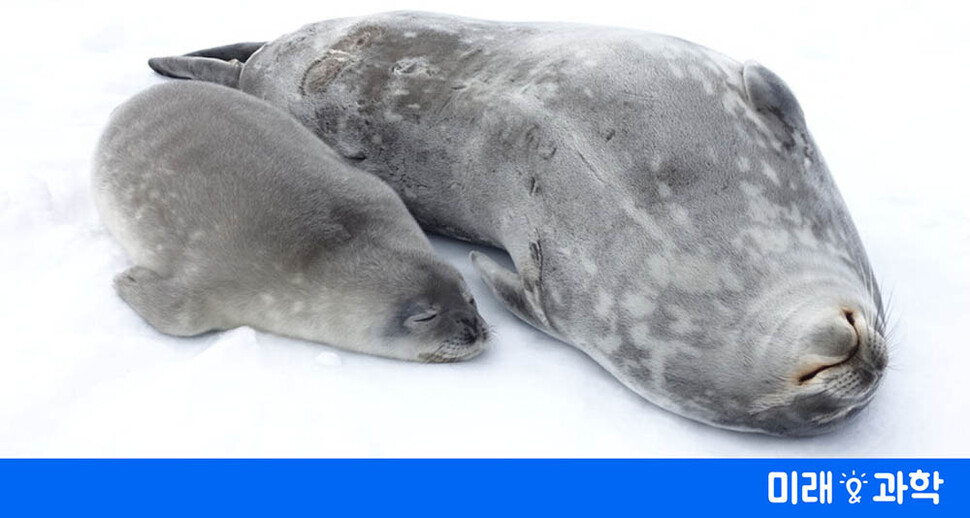Polar Research Institute Sejong Science Base Drone Photography
First report of long-term observation of seals in the 21st century
Babies swim less than 20 days after they were born

Weddell seal mother and baby observed near Sejong Station in Antarctica. Provided by Polar Research Institute
The Polar Research Institute has unveiled the birth and growth of seal pups in Antarctica by shooting it with a drone for four years. It is the first time that long-term observations of seals have been reported in this century, and are evaluated as important data for changes in Antarctic ecosystems. The Polar Research Institute announced on the 11th, “We will disclose the life of a seal that has been observed for 4 years near the Antarctic Sejong Science Base.” (▶ This video cannot be viewed on Naver and Daum News pages. To check the video, herePlease press!) Seals are the top predators of Antarctica and are one of the important biomarkers for understanding the changes climate change will bring to Antarctic ecosystems. The seal’s main prey is mollusks such as squid and fish. As glaciers and sea ice disappear, the number of these species decreases, which can affect seals as well.

Weddell seal mother and baby observed near Sejong Station in Antarctica. Provided by Polar Research Institute
Lee Won-young, a senior researcher at the Polar Research Institute, famous for “Dr. Penguin,” has observed 7 pairs of “Wedel Seals” mothers and babies for four years since 2015 on King George Island, Antarctica, where the Sejong Station is located. Three pairs were observed in the first year, but no breeding targets were found in the following year. Afterwards, two pairs were observed in 2017 and 2018. This is the first time that a long-term observational study of a seal conducted in the South Shetland Islands, where King George Island is located, has been reported to the academic community in the 21st century.
Baby Weddell seals were born on September 19-25, when spring begins in Antarctica. The research team said, “It is more than 15 days earlier than the Antarctic high latitude region, and the warm season is the first effect on low latitudes. This suggests that global warming can accelerate the breeding period of Weddell seals.” In 2015, I was able to shoot even after giving birth. Two baby Weddell seals began swimming for the first time after 18-19 days of birth, and their first molt 3-6 days later.

A drone photograph of the southern elephant seal habitat along the coast of King George Island, Antarctica. Provided by Polar Research Institute
Meanwhile, the research team succeeded in observing the rearing of baby seals from a distance by introducing a new technique for drone photography. Using the temperature difference between the seal and surrounding ice, which differs by more than 30 degrees, it is a drone with a thermal infrared camera to distinguish between the adult and the baby of the southern elephant seal. The southern elephant seal, like the Weddell seal, inhabits widely along the Antarctic coast and is the most common marine mammal near Sejong Station.
The research results of the research team were published in the December 2020 issue of a veterinary science journal. Senior Researcher Won-young Lee said, “We are expanding the observation range of seals, the top predators of Antarctica, in both time and space,” he said. “Using the collected observation data will help to understand Antarctic ecosystem and climate change.” By Lee Geun-young, staff reporter
